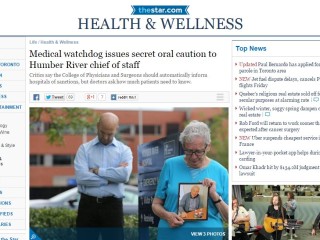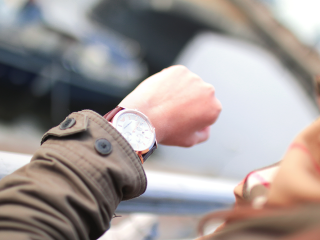The LAT held that the golf cart is not an “automobile” because the subject accident did not take place on a “common and public driveway”. As such, the applicant was prohibited from launching an accident benefits claim.
Date Heard: Written Hearing: January 5, 2017 | Full Decision [PDF]
In this case, the applicant was struck by a golf cart between the club house and a shed and applied for accident benefits. The insurer, State Farm Mutual Automobile Insurance Company, took the position that the applicant was not injured in an “accident”, as defined by section 3 of the Statutory Accident Benefits Schedule – Effective September 1, 2010 (“SABS”), which requires the “use or operation of an automobile”. The parties agreed to have the Licence Appeal Tribunal (“LAT”) determine the preliminary issue as to whether the golf cart that struck the applicant is an “automobile” as referenced in section 3 of the SABS. The LAT held that the golf cart is not an “automobile” because the subject accident did not take place on a “common and public driveway”. As such, the applicant was prohibited from launching an accident benefits claim.
In his analysis, Adjudicator Sewrattan commented that if the subject golf cart required automobile insurance, which it did not, then it is considered an automobile. He elaborated on that distinction in stating that if the golf cart was not legislatively required to purchase a motor vehicle policy, then it is not an “automobile” for the purpose of section 3 of the SABS. Adjudicator Sewrattan also cited Grummett v. Federation Insurance Co. of Canada (1999), in which the Court asked three questions to help determine whether a vehicle is considered an “automobile”:
- Is the vehicle in question an “automobile” in the ordinary sense of the word?
- If the first question is answered in the negative, then is the vehicle in question defined as an “automobile” in the insurance policy?
- If the first and second questions are answered in the negative, then is the vehicle in question as an “automobile” in any other relevant statute?
Adjudicator Sewrattan interpreted from the parties’ written submissions that the parties agreed that the first two questions are answered in the negative. Whatever the true position of counsel for the applicant, this author would submit that a golf cart is an “automobile” in the ordinary sense of the language (question one). Automobiles need not have four wheels; be gasoline-powered; or be enclosed by doors, a windshield, and a roof. A golf cart transports persons from one location to another; travel at varying speeds; have steering wheels, gas pedals, and brake pedals; and seat multiple occupants. All of these truths were rendered irrelevant by Adjudicator Sewrattan’s interpretation of the position of counsel for the applicant and the above-noted case law. Instead, his analysis focused on the third question.
Section 224(1) of the Insurance Act states that a vehicle is considered to be an “automobile” if prescribed by regulation to be an automobile, which golf carts are not; or if the vehicle is considered a “motor vehicle” and is required to be insured. With respect to the latter, section 1(1) of the Insurance Act defines “motor vehicle” as “any other vehicle propelled or driven otherwise than by muscular power, which golf carts are. These findings led Adjudicator Sewrattan to one final basic question: whether the subject golf cart was required to be insured at the time of the subject accident.
Section 2 of the Compulsory Automobile Insurance Act states that a motor vehicle must be insured if it operates on a “highway”, which the Compulsory Automobile Insurance Act defines as including “a common and public highway, street, avenue, parkway, driveway, square, place, bridge, viaduct or trestle, any part of which is intended for or used by the general public for the passage of vehicles and includes the area between the lateral property lines thereof”. Adjudicator Sewrattan found that the subject property was private and was not a “common and public” driveway, a finding with which this author disagrees based on the driveway’s ordinary use by members of the golf club walking from the club house to the parking lot. The placement of the accident as adjacent to a shed is not relevant if members walk near that area, which they clearly do. In the end, Adjudicator Sewrattan held that the subject golf cart did not meet the definition of “highway” in the Highway Traffic Act and that it fails the test set out in Grummett.
Arbitrator Sewrattan stated at paragraph 24 that “The driveway is intended for use by a limited population of golf course patrons and employees”. Would the LAT have decided the case differently if the golf cart struck a motorist who made a wrong turn and pulled into the parking lot to ask for directions? How about a guest to the club on a guest tournament day, when guests are invited in? What about if the golf cart struck a pedestrian only one inch removed from the driveway to the golf club’s parking lot? What about if the golf club was a public course? What if the subject golf club had 10,000 members? Although these are unusual and unique hypotheticals, this author poses these questions to highlight the flaw in the interpretation of the relevant legislation set out above. The flaw exists because in each hypothetical, accident benefits coverage would have been available and the test in Grummett would have been met. These different scenarios share many similarities with the fact pattern at issue, although none are entirely on point. There is a public policy concern in extending coverage to the persons described in the above hypotheticals and not the applicant in the claim at bar. Beyond this public policy argument, however, this author is not convinced that a golf cart is not an “automobile” in the ordinary sense of the word, especially given that it is a vehicle that propels or drives otherwise than by muscular power
Read the full decision [PDF]












